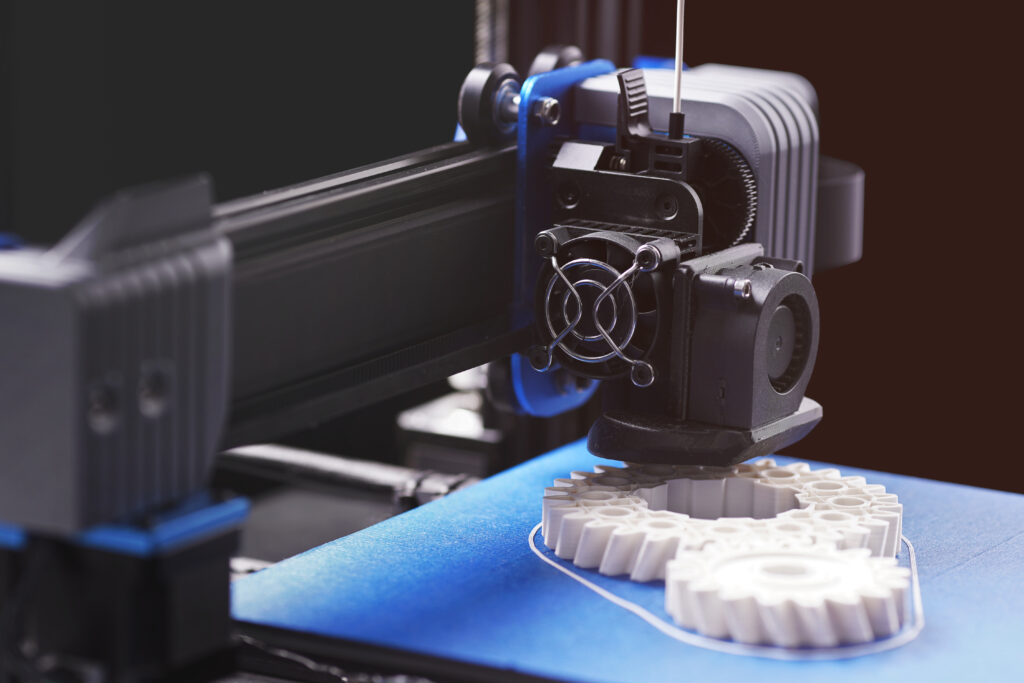Rapid prototyping services (RPS) help engineering teams determine the specifics before mass production and distribution. However, that’s only possible with a reputable company prepared for advanced manufacturing. Here’s how to find the best services for your schedule and budget.
Rapid prototyping services can make or break your approach and significantly impact your budget. Companies need reliable processes to develop products and test innovative designs. Without fast manufacturing, that can be a challenge.
Determining the pros and cons of RPS is simple. You must consider the advantages and disadvantages. Then you can compare those to your objectives and resources for the best outcomes. However, choosing between different RPSs requires more work.
Many companies utilize outdated equipment and inefficient methods to fulfill orders. They can cut corners, skip processes, or offer lacking services at high prices. Select your service provider carefully by using this guide. Here is what you need to know.
Table of Contents
What Are Rapid Prototyping Services?
Rapid Prototyping Applications
Types of Rapid Prototyping Services
The Benefits of Rapid Prototyping Services
Drawbacks to Rapid Prototyping Services
3 Things to Consider When Choosing Rapid Prototyping Services
#1. Quality Expectations
#2. Design Complexity
#3. Fidelity
Tips for Picking Rapid Prototyping Services to Suit Your Goals
TIP #1: Think About the Product Purpose
TIP #2: Consider Your Project Deadlines
TIP #3: Remember the Production Budget
Special Considerations About Rapid Prototyping Services
Conclusion
What Are Rapid Prototyping Services?
Rapid prototyping services are essential to the modern economy. The process helps support sustainable development by efficiently fabricating physical parts, models, and assemblies. RP involves building a 3D computer-aided design (CAD) for precision manufacturing. Many fab shops use 3D printing to form complex components with minimal waste quickly.
Companies providing rapid prototyping services typically offer shortened lead times, improved accuracy, and decreased operational costs. However, RP is usually a substantial upfront investment. Product development teams must weigh the pros and cons to determine the most efficient approach. They can also talk to machine operators, engineers, and specialists to decide.
DID YOU KNOW: You can get a no-obligation quote on RPS from many providers.
Rapid Prototyping Applications
RP can change the game in multiple ways. These are some of the most common applications for high-quality rapid prototyping services:
- Concept models
- Detailed visual representations
- Functional display
- Pre-production previews
Rapid prototyping services allow you to design parts or assemblies while perfecting the blueprint. However, you must use the appropriate techniques based on your concept complexity and industry standard.
Types of Rapid Prototyping Services
Understanding the various rapid prototyping approaches is crucial. This knowledge can help you create better parts for less money and in less time. It can also help you avoid some drawbacks to rapid prototyping services from less scrupulous providers.
First, companies use rapid prototyping services for individual parts instead of complex assemblies. Specialists help develop specific elements that fit together perfectly for optimal functionality. RP should reveal the issues of each component for testing and evaluation before mass manufacturing. It should not represent your final product.
Second, many companies categorize their prototypes based on their degree of accuracy. Other criteria might include the development stage and product purpose. The RPS you choose will determine outcome quality, so don’t forget to ask questions.
FACT: You can pay for low-fidelity or high-fidelity prototypes for different applications. Each product will have unique functionality, dimensions, and appearance.
The Benefits of Rapid Prototyping Services
Highly regulated RPS comes with multiple advantages. Experts say you can design better and faster with this new technology. That’s because the benefits of rapid prototyping are evident even within the first few phases of development.
Not sure whether rapid prototyping services fit in the budget? Here are some pros to consider:
- Reduced Product Development Costs – Cut unnecessary expenditures to invite more innovation.
- Enhanced Functionality Testing – Define parameters and examine performance before manufacturing.
- Eliminated Failure Risk – Avoid design discrepancies by troubleshooting elements with a diverse team of experts.
- Comprehensive Evaluations – Calculate end-use practicality with real-time examinations and ISO-centered inspections.
- Decreased Product Hazards – Catch all the dangerous design issues before it’s too late, then adjust before mass production.
- Increased Stakeholder Involvement – Entice users and stakeholders with exciting developments and timely product enhancements.
- Guaranteed Repeatability – Fulfil large batch orders with consistent precision using advanced manufacturing technologies and automation.
Use RP to stay ahead of the competition with efficient processing and approved results. RPS answers crucial questions to streamline and strengthen your campaigns. However, there are several drawbacks also to consider before signing up.

We offer fast, high-quality, tailored PROTOTYPING solutions for leading companies in a wide range of industries.
superior Rapid PROTOTYPING
Drawbacks to Rapid Prototyping Services
Rapid prototyping services are imperfect, with several improvements still in the works. Many engineers find the results less helpful than required because of a vast misunderstanding of the process. For starters, RPS is not the same as 3D printing.
RP does not render a final product but instead creates a digital model close to the real thing. You must also invest in additive manufacturing or CNC machining to develop a high-quality end-use product. Talk to your team for more specific information about lead times and manufacturing costs.
Here are some of the drawbacks to discuss:
- Fast Manufacturing Costs – Some rapid prototyping services are expensive, with few discounts for manufacturers on a budget.
- Material Restrictions – Companies are limited to the materials they can use for RPS and scale model production.
- Reduced Outcome Quality – RP renders low-quality models to help eliminate unnecessary expenses during the testing phase.
- Required Skilled Labor – You can’t use rapid prototyping or additive manufacturing without a highly trained expert.
Another concern is end-user confusion, as customers mistake the prototype for the finished product. Teams must communicate their objectives clearly to avoid uncertainty and chaos or face backlash when introducing new designs to stakeholders. Thus, depending on whether function or fashion are more important, RPS might not be the best answer.
TIP: Be careful not to overlook critical features that can’t be prototyped because they can negatively impact testing results.
3 Things to Consider When Choosing Rapid Prototyping Services
Choosing the best rapid prototyping services can be challenging, especially when time is of the essence. Short lead times aren’t always possible with complex designs. The materials also play a significant role in scheduling and budgeting, so learn the various elements before setting expectations.
You can consult your team for advice, but prepare for discussions about the following considerations:
#1. Quality Expectations
Do you need high-quality prototypes, or can you get by with something rudimentary? Set realistic expectations based on your objectives. That way, you’re not disappointed if your models come out too simple or unfit for the market.
Meanwhile, pick a provider that can produce high-quality outcomes despite the challenges. Exceeding industry standards helps place your company above the competition more quickly. Rapid prototyping services save time and reduce overall expenses, even if you create several models or pay exorbitant upfront fees.
TIP: Don’t expect your prototypes to be perfect; expect precision.
#2. Design Complexity
Consider the design intricacy when choosing rapid prototyping services. Some companies cannot fabricate every component of an assembly without outsourcing or improvisation. You likely want a one-stop shop to help cut costs and streamline processing. Ask your provider how they conduct business to determine efficiency.
Complex designs might require more time and attention, depending on several factors. The geometries, materials, and purposes can also affect the pricing and timing, so shave expenses where you can. Use RPS to develop flawless parts to a practical whole. Then choose the most efficient methods to manufacture orders.
TIP: Treat the prototyping phase as an opportunity to get answers about your design.
#3. Fidelity
What is the desired look or function of each design? Determine the perfect prototype fidelity before launching a project to avoid unnecessary expenses and wasted time. High-fidelity prototypes help teams refine various details to prepare them for the final implantation. Low-fidelity prototypes demonstrate different design elements for examination, troubleshooting, and retooling.
You can tailor rapid prototyping services to suit unique objectives and meet deadlines. Pick between faithful functionality or fashionable presentation or find a happy compromise. Consult your team for insights on each design’s desired aesthetic and behavior, then iterate those requirements to the manufacturing crew for a smooth operation.
TIP: More precise RPS usually requires advanced tools and software.
Match RPS with your goals and maintain a flexible budget for unexpected expenses. Fast manufacturing can be unpredictable depending on these evolving factors:
- Planning
- Materials
- Tolerances
- Timeline
- Supply Chain
- Industry Trends
- Software
- Rapid Prototyping Services Provider
Talk to your crew about how supply chain disruptions and advanced CAD software can impact your RP objectives.
Tips for Picking Rapid Prototyping Services to Suit Your Goals
If you’re looking for rapid prototyping services, then you’re likely asking the following questions:
- How do I know whether to choose low-fidelity or high-fidelity outcomes?
- Can prototype fidelity affect my lead times?
- Is my design too complex for an intricate and functional model?
- Which is more critical to my objective: quality or quickness?
- What should I look for during the testing phase?
- How can I help troubleshoot a faulty design element?
- Are my expectations realistic, or should I rethink my approach?
Answering all those questions can be challenging without some basic information. However, these three tips should help clarify:
TIP #1: Think About the Product Purpose
The experts providing rapid prototyping services cannot decide your design’s purpose. That’s something you must do before initiating a project. However, prototyping specialists can help you determine your most productive, efficient, cost-effective strategy.
TIP #2: Consider Your Project Deadlines
Many people consider rapid prototyping services fast manufacturing because of the expedited modeling capabilities. However, some orders could take longer than others. Your project deadlines are essential, but multiple variables could fudge the schedule. Plan accordingly.
TIP #3: Remember the Production Budget
Choose rapid prototyping services that are flexible and affordable. You shouldn’t pay for mistakes made by staff, but forgetting details or overlooking specifics can cost you. Talk to your team about ways to reduce expenses while maintaining your prototyping integrity.
Don’t forget the impact of materials, suppliers, ISO standards, and industry trends on your overall experience. Manufacturing facilities offering RPS cannot control every aspect of the process. You must practice due diligence to get the most out of your investment.
DID YOU KNOW: Advanced RPS can cost less than traditional modeling methods because of the enhanced efficiency.

We offer fast, high-quality, tailored PROTOTYPING solutions for leading companies in a wide range of industries.
superior Rapid PROTOTYPING
Special Considerations About Rapid Prototyping Services
Pricing and scheduling RPS can be tricky. There are multiple factors to consider, and each project is unique. Meanwhile, only the experts understand the finer points of fast manufacturing with sophisticated technology. Amateur attempts can lead to accidents, oversights, and disasters.
Prepare for a meaningful meeting with your team by studying these special considerations:
- Price Variables
Material prices and tooling costs can vary depending on the location and supplier. However, your service provider cannot control the impact of inflation on manufacturing. Account for changing interest rates, shifting import/export fees, and other unexpected expenses.
- Material Limitations
Supply chain disruptions can lead to material shortages that might impact your bottom line. Limiting imports, exports, and order sizes can also affect your project outcomes. Consider the global marketplace before judging the service provider for its restrictive policies.
- Industry Restrictions
Laws could determine the possibilities for manufacturers seeking RPS. The reason is that some industries can change their best practices after new discoveries or innovations. Maintaining ISO standards can be a challenge for the wrong provider.
- Facility Competence
Rapid prototyping service quality depends heavily on facility competence. If the company struggles to keep up with the latest manufacturing technology, it’ll likely charge more for RP. Ask to see a portfolio of past work or discuss the limitations before setting expectations.
Conclusion
Rapid prototyping services vary widely based on multiple factors, so learning to discern is essential. Engineering teams can use these advanced manufacturing techniques to expedite product development and cut production costs. However, RPS might not be suitable for every application. The price and timeline depend on the materials, complexity, design, and provider.
 About the Author
About the Author
James Murphy is the founder and CEO of HLH Rapid – a hybrid CNC machine shop fusing Western service and quality with Eurasian industry influences for over 14 years. His advanced enterprise uncovers cost-effective rapid injection molding techniques to remain unmatched by industry competitors. Murphy’s full-service fabrication and manufacturing methods span six dedicated zones, from 3D printing and vacuum casting to sheet metal prototyping and project management. His expertise also includes high-efficiency machining within strict yet volatile markets.
Murphy earned an MBA after becoming inspired by his father’s hands-on craftsmanship. As a budding entrepreneur, he taught English and studied Chinese to pursue pioneering objectives. His groundbreaking approach helps build the future by providing well-rounded manufacturing services to innovative Western businesses. When he’s not offering upscale RP and CNC, James enjoys art-house movies, Thai boxing, and spending time with his growing family.


